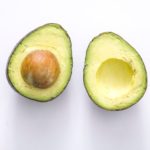The Scientific Name of Avocado
Be it Italian pasta dishes, Japanese sushi, or Australian seafood salads – one fruit that blends with every food is the avocado, one of the most valuable fruits given to us by nature. The avocado reportedly originated in Mexico and Central America and was later carried to nearly all-tropical and subtropical regions of the world either by the environment or people. The scientific name of avocado is Persea americana.
The avocado tree is dense, evergreen, and fast-growing with a possible length of 80 ft with age. Leaves are alternate, glossy, elliptic, and dark green. The fruit comes in various shapes but mainly either oval or pear, depending on the variety. The average size of the fruit can be 10 cm long with fine leathery skin. While some avocado species are glossy green others can turn purplish-black when ripe. Whatever is the outer color, the inner section is the same. The center of the avocado contains a large inedible seed surrounded by soft buttery, creamy white flesh.
One distinguishing characteristic of the avocado is that it doesn’t ripen on the tree. Mature fruit is picked and kept at room temperature for 3-8 days to ripen.

The avocado, which is colloquially known as the Alligator’s Pear, is such a tasty fruit – once you experience the nutty taste of this fruit, you will simply find it irresistible!
Also, avocado is one of the rare fruits that contain fat. However, this fat is considered good fat and helps keep you healthy. It is a rich source of vitamin E, which helps prevent oxygen damage to the body’s cells. Apart from this, it has lots of dietary fiber that helps in the efficient moving of food throughout your body. It also contains vitamin B6 which is required for managing the nervous system, keeping healthy skin, and producing energy in the body.
Further, the avocado has a high quantity of antioxidants to neutralize destructive molecules of cancer cells.
Avocado is a versatile fruit. It is equally delicious with vegetables as well as with other fruits. This fruit can simply be cut into slices and eaten with scrambled eggs, soups, salads, dips, sauces, or sandwiches.



























